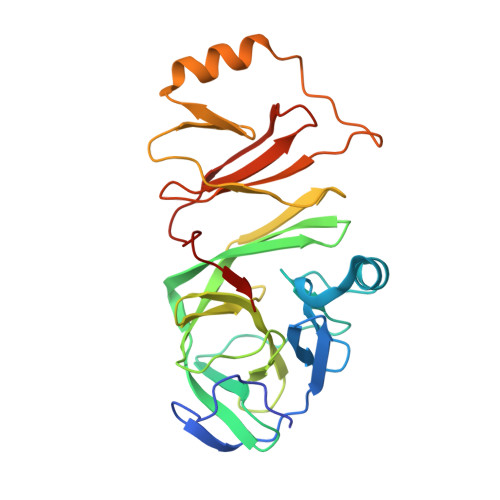Structures of diverse poxin cGAMP nucleases reveal a widespread role for cGAS-STING evasion in host-pathogen conflict.
Eaglesham, J.B., McCarty, K.L., Kranzusch, P.J.(2020) Elife 9
- PubMed: 33191912
- DOI: https://doi.org/10.7554/eLife.59753
- Primary Citation of Related Structures:
6XB3, 6XB4, 6XB5, 6XB6 - PubMed Abstract:
DNA viruses in the family Poxviridae encode poxin enzymes that degrade the immune second messenger 2'3'-cGAMP to inhibit cGAS-STING immunity in mammalian cells. The closest homologs of poxin exist in the genomes of insect viruses suggesting a key mechanism of cGAS-STING evasion may have evolved outside of mammalian biology. Here we use a biochemical and structural approach to discover a broad family of 369 poxins encoded in diverse viral and animal genomes and define a prominent role for 2'3'-cGAMP cleavage in metazoan host-pathogen conflict. Structures of insect poxins reveal unexpected homology to flavivirus proteases and enable identification of functional self-cleaving poxins in RNA-virus polyproteins. Our data suggest widespread 2'3'-cGAMP signaling in insect antiviral immunity and explain how a family of cGAS-STING evasion enzymes evolved from viral proteases through gain of secondary nuclease activity. Poxin acquisition by poxviruses demonstrates the importance of environmental connections in shaping evolution of mammalian pathogens.
- Department of Microbiology, Harvard Medical School, Boston, United States.
Organizational Affiliation:

















